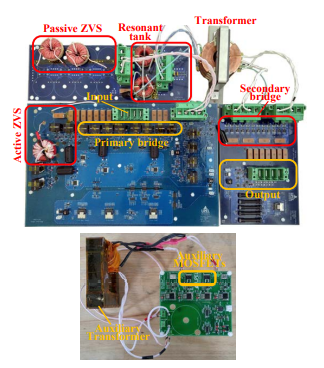Low RMS current Zero Voltage Switching Assisting Circuit with low power loss and EMI
Zero voltage switching (ZVS) allows for a more efficient AC–DC conversion. Due to technological advances in recent years, the standard operating frequency of power converters is increasing. This poses problems for series-connected resonant converters, as they cannot operate with ZVS over the entire range of load and input voltage. To alleviate this problem, ZVS assisting circuits are required to accomplish soft switching and thus achieve efficient power conversion. This technology proposes a new circuit system to minimize radiation and increase energy efficiency.
Problem
AC–DC conversion requires a change in an electric or magnetic field which results in electromagnetic radiation and thus, a loss in energy. In constant-current, DC power distribution systems, changes in load voltage lead to wide variations in the input voltage. This makes passive ZVS assisting methods challenging and inefficient. Active assisting techniques can overcome these problems by controlling the assisting current, but can lead to high conduction loss or high rates of change in voltage that lead to high electromagnetic interference.
Solution
The ZVS assisting circuit developed by researchers at Utah State is capable of achieving ZVS in the main leg switches, while avoiding high conduction loss, high voltage stress in the assisting circuit, and high electromagnetic interference.
Benefits
This technology focuses on the minimization of electromagnetic emission, aiding in energy efficiency which results in saving resources. The benefits of commercializing this technology include creating power systems with low conduction loss, low voltage stress in the assisting circuit, and low electromagnetic interference. Saving energy and money are two of the bigger benefits of this technology.
Applications
AC–DC conversion is crucial in the world today in many different industries. Electric vehicle manufacturing, for example, is one such industry that is looking to optimize these conversions in order to provide more efficient methods of charging. This technology can be used in resonant power conversion applications such as integrated circuits and electronic devices.

Contact
Questions about this technology including licensing availability can be directed to:
Alan Edwards, MA, JD
Manager, Technology Transfer Services
(435) 797-2328 alan.edwards@usu.edu
USU ID C17046
Inventors
Tarak Saha, Ph.D., Computer and Electrical Engineering
Hongjie Wang, Ph.D., Computer and Electrical Engineering
Regan Zane, Ph.D., Computer and Electrical Engineering
Development Stage
TRL 2

